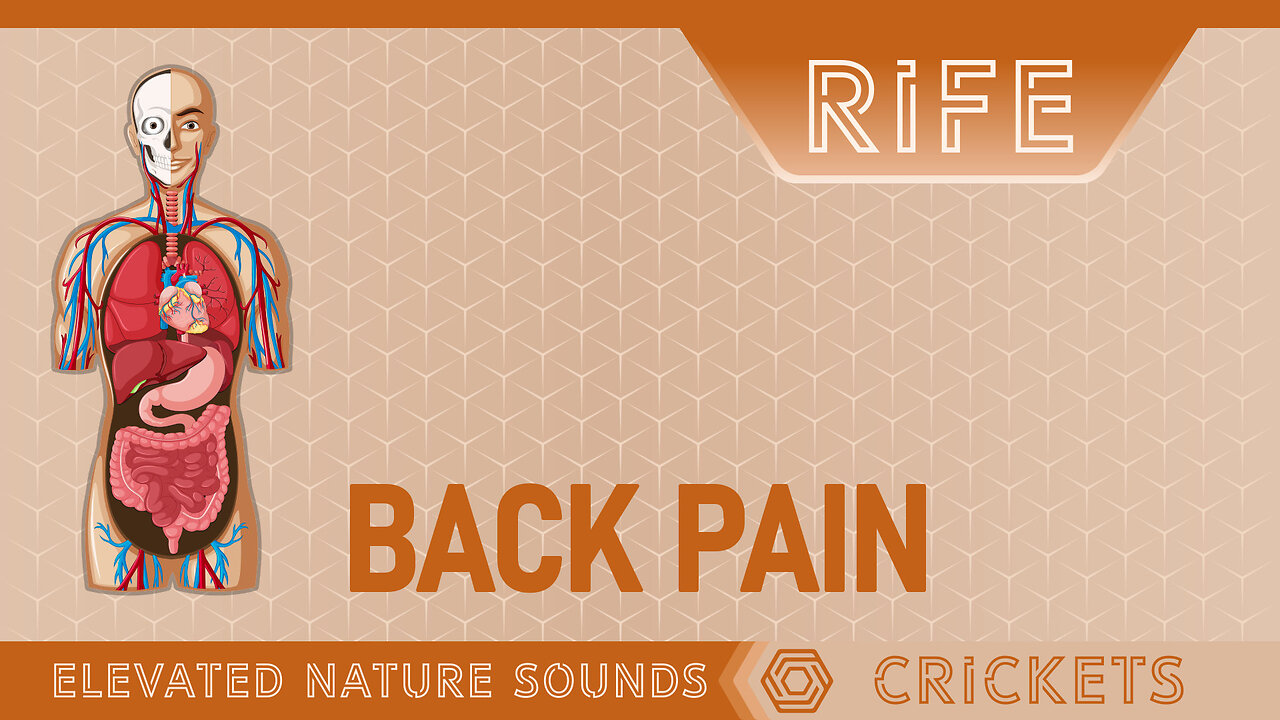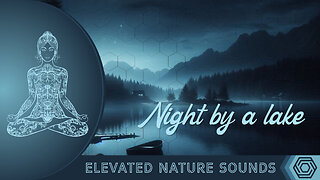Premium Only Content

HEALING BACK PAIN with RIFE
Back pain is a prevalent condition that can vary in intensity, duration, and location. Here are some characteristics commonly associated with back pain:
Location: Back pain can occur in various areas of the back, including the lower back (lumbar region), upper back (thoracic region), or neck (cervical region). The specific location can sometimes indicate the underlying cause.
Pain intensity: Back pain can range from mild discomfort to severe and debilitating pain. It may be dull, achy, sharp, stabbing, or throbbing in nature.
Duration: The duration of back pain can be acute (lasting less than six weeks), subacute (lasting six to twelve weeks), or chronic (lasting longer than twelve weeks). The duration often depends on the cause and appropriate treatment.
Range of motion limitations: Certain back conditions may restrict your ability to move or bend your back comfortably. This limitation can affect daily activities and mobility.
Muscle spasms: Back pain can be accompanied by muscle spasms, which are involuntary contractions of muscles in the back. These spasms can cause additional pain and stiffness.
Radiating pain: Back pain may radiate to other parts of the body, such as the hips, buttocks, or legs. This type of pain is often associated with conditions like sciatica, where the sciatic nerve is compressed or irritated.
Weakness or numbness: In some cases, back pain may be accompanied by weakness or numbness in the legs or arms. This can indicate nerve compression or damage.
Common causes of back pain include:
Muscle or ligament strain: Strained muscles or ligaments often result from heavy lifting, sudden movements, or poor posture.
Disc problems: Conditions like herniated discs, bulging discs, or degenerative disc disease can put pressure on spinal nerves, causing back pain.
Spinal abnormalities: Structural abnormalities like scoliosis (sideways curvature of the spine), kyphosis (excessive forward curvature of the upper back), or lordosis (excessive inward curvature of the lower back) can lead to back pain.
Arthritis: Osteoarthritis and other forms of arthritis can affect the spine, leading to back pain and stiffness.
Osteoporosis: Weakening of the bones due to osteoporosis can increase the risk of vertebral fractures, which can cause back pain.
Injuries: Traumatic injuries, such as fractures, sprains, or strains, can result in acute or chronic back pain.
Poor posture and ergonomics: Prolonged sitting or standing in an incorrect posture, improper lifting techniques, or using poorly designed furniture can contribute to back pain.
It's important to note that these are general characteristics and causes, and a medical professional should evaluate your specific symptoms to provide an accurate diagnosis and appropriate treatment.
*******************************************
Your support is greatly appreciated
https://donate.stripe.com/9AQdSq9MO0vY8YoaEE
*******************************************
+ Every original audio on this channel is recorded in HQ 44100Hz (never compressed)
=============================
+ Audio is multilayered with pure tones, solfeggio frequencies, masking noises underneath ambient sounds of nature.
=============================
+ All audio recordings are my original work and are not available in any public sound file library.
=============================
+ Additional sound layers are created in collaboration with wonderful artists from different platforms such as Mixkit, Pixabay, Free Sound Library, FreeSound…
=============================
DISCLAIMER - CONTENT OF THIS CHANNEL
Please note that the information provided is not intended to be a substitute for professional medical advice, diagnosis, or treatment. The content is for informational purposes only.
-
 8:00:28
8:00:28
Elevated Nature Sounds
5 months ago8-Hour Sleep Cycle Frequencies: Lakeside Crickets with Black Screen Calm
1.58K2 -
 2:06:05
2:06:05
"What Is Money?" Show
2 days agoTrump Family Bitcoin Bet Will Trigger Nation-State FOMO w/ Matt Prusak (CEO American Bitcoin)
13.4K -
 1:04:36
1:04:36
Dialogue works
3 days ago $4.50 earnedMohammad Marandi: Iran Just Gave Israel a FINAL Warning…
23.4K6 -
 9:20
9:20
daniellesmithab
1 day ago3 Bad Laws
23.3K8 -
 9:22
9:22
MattMorseTV
19 hours ago $11.63 earnedINDIA just made a BIG MISTAKE.
65.1K60 -
 12:11
12:11
Nikko Ortiz
18 hours agoCrashout 6 Rumble
17.5K3 -
 22:35
22:35
GritsGG
18 hours agoThe KILO is BACK! The Best AR on Warzone FRIES!
25.7K1 -
 2:16:36
2:16:36
Side Scrollers Podcast
21 hours agoStreamer KICKED OUT of Renaissance Fair for Misgendering + Spiderman MELTDOWN | Side Scrollers Live
47.4K8 -
 12:29
12:29
The Pascal Show
1 day ago $2.53 earnedLOCKED IN A DUNGEON?! Parents Arrested After 5 Children Found In 'Dungeon' At Home
18.7K3 -
 LIVE
LIVE
Lofi Girl
2 years agoSynthwave Radio 🌌 - beats to chill/game to
313 watching